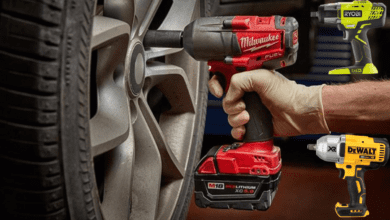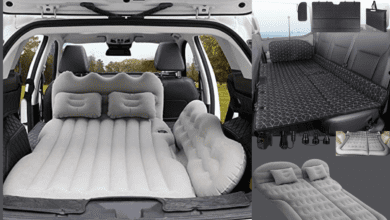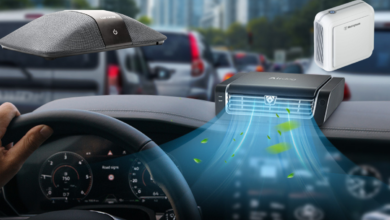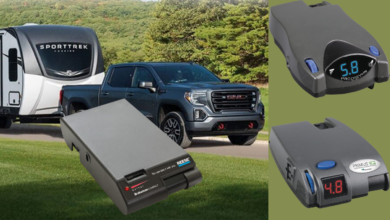The best performance tyres
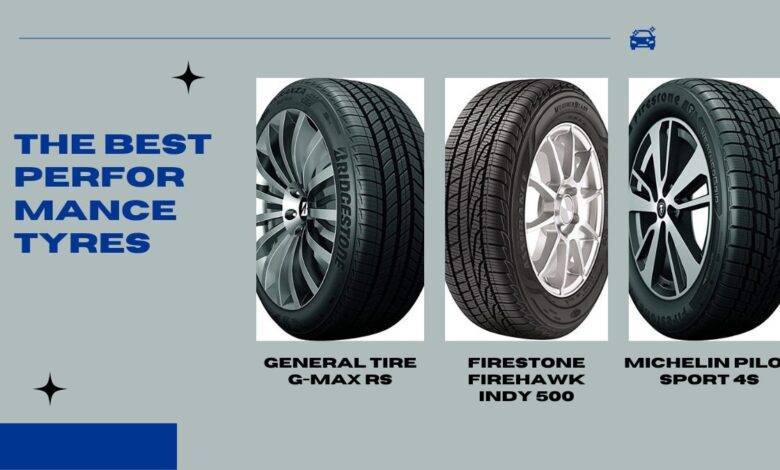
The simplest and most affordable approach to improve any car’s handling is performance tyres For those who like driving, a good pair of performance tires is the key to improving the handling and grip of a sports car, sedan, or SUV.
Performance tires are designed to have the highest traction in hot weather and often outperform all-season tires in torrential downpours. Sticky additives are mixed with a soft tread composition to provide a performance tire with the best warm, dry and wet road grip. Thanks to shallow, straight tread grooves, more rubber is in touch with the road. When the road (or track) is hot, good-performance tires provide adequate stiffness to maintain shape and avoid rolling resistance.
Aside from producing more smiles per mile, the extra traction also improves safety and reduces stopping distances. When performance tires are used to replace most original tires, a vehicle’s appearance will also be improved. Consider the tire’s overall wet and dry road performance, treadwear ratings, road comfort, and price to select the ideal performance tire for your driving style. Five of the top performance tires available right now are listed here, with a summary of each set’s benefits and drawbacks from carhot3. Prices will vary according to size. The rear tires on many high-performance vehicles are wider than the front ones. Only the front tires for a 2020 Ford Mustang GT are included in our price.
Michelin Pilot Sport 4S
The gold standard for performance tires is the Pilot Sport 4S. Michelin mixes ride quality with responsive handling and outstanding grip by creating the Pilot Sport 4S with essential technology derived from the demanding and competitive 24 Hours of Le Man’s races. The handling of the Pilot Sport 4S is responsive and accurate in hot weather, whether the roads are dry or wet. Although the performance of these tires is unmatched for street driving, drivers who race their vehicles more competitively do not suggest the Pilot Sport 4S. Some owners complain that the tread on the tire shoulders will wear out and start to shed bits of rubber after too many fast circuits around the track. You may wish to look for a tire made specifically for track usage if competitive driving is your primary objective.
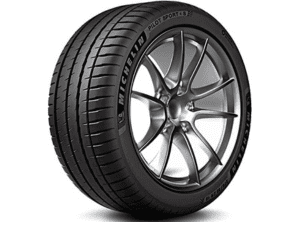
Firestone Firehawk Indy 500
The Firehawk Indy 500 tire is another one created using technologies inspired by motorsport. The Firehawk Indy 500 tires are designed for sports cars and performance sedans, and they provide outstanding traction and precise handling in both dry and wet situations. The comfort of this tire’s ride is highly praised by drivers, while some complain that it is almost too smooth for people who want to feel the roughness of the road. Although the centre groove aids in water dispersion, drivers have noticed the possibility of hydroplaning in deeper waters, especially during severe downpours. Additionally, “tramlining,” or the propensity of the tires to follow seams in the road, was noticed by drivers. When driving aggressively on the track, be aware that the tires may overheat and get greasy after many laps, necessitating a cool down.
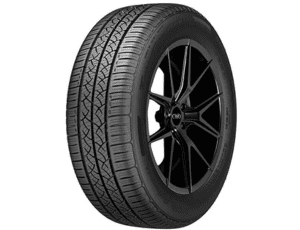
Bridgestone Potenza Sport
Although the Bridgestone Potenza Sport tire is still fairly new, drivers have already put a lot of miles on it and are praising it for its superb steering response and feedback. According to reports, the Michelin Pilot Sport 4S and Potenza Sport have almost identical levels of dry grip on turn-in and through the bends. A quick, solid steering response and excellent dry traction are associated with a cost. Customers said that the tires often wear out more quickly than other high-performance rivals. On slick roads, the tires’ sensitivity to load fluctuations might increase the danger of hydroplaning.
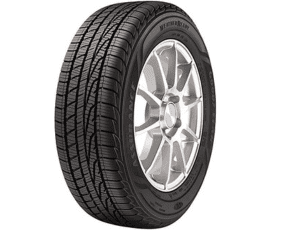
Continental ExtremeContact Sport
Deep grooves in the tread compound of the ExtremeContact Sport enable water to pass through the contact patch and prevent hydroplaning in wet situations. Several customers claim this tire’s strongest quality is its ability to retain traction on wet roads (even rapid braking). Also effective is dry traction.
On well-maintained roads, drivers say the ExtremeContact Sport tires ride well, but on rougher routes, they may produce more road noise than tires from rival companies. According to reports, the tire’s sidewalls are weaker than those of other high-performance rivals, which might cause body roll while making tight bends.

General Tire G-Max RS
With the G-Max RS, General Tire provides excellent value. They apparently have a slower steering reaction than comparable performance tires, but they still have outstanding traction. With higher highway speeds comes increased road noise, as reported by drivers. These tires may overheat when driven on a track, but for everyday errands around town and summer highway commuting, the G-Max RS tire’s all-around value is difficult to match.

How the driving dynamics of your automobile will be improved with performance tires
Although upgrading to a pair of summer performance tires won’t increase your car’s horsepower, it will offer you a greater contact patch and let you apply more force to the road. Additionally, your automobile will stop with less space between stops and handle turns better. According to Engineering Explained, one illustration is the fact that a car with ordinary performance tires may lap a track quicker than a car with twice the horsepower on all-season tires.
Performance tires are a good option for drivers who want accurate handling, better responsiveness, and maximum grip during acceleration, turning, and braking. Upgrading to a high-performance summer tire is worth the little trade-offs in gas efficiency, tire longevity, and (sometimes) ride comfort since it gives you more control on the road or racetrack.
Why all-season tires are inferior to performance tires
Winter or cold weather traction is provided by all-season tires to help drivers through mild snowfall. Drivers that travel through all four seasons have the choice to use the same set of tires all year round thanks to the capacity to endure cold conditions. Summer performance tires’ great wet and dry road performance, improved handling, and better traction are likely to be appreciated by drivers who reside in warmer climates or who value their enthusiastic summer joyrides.
Why you must swap out summer tires in the winter
Performance tires of any size should never be driven in temperatures below 45 degrees Fahrenheit because they have little to no grip in cold, winter weather. Their flexible composition stiffens in colder weather, making it dangerous to drive on ice, snow, or slush. Prior to being moved, flexed, or driven on in any manner, performance tires that have been exposed to ambient temperatures of 20 degrees F or below must be left for at least 24 hours to gradually warm up to temperatures of at least 40 degrees.
How durable are high-performance tires?
If you don’t drive on the racetrack, most high-performance tires have a daily mileage life of around 20,000 miles. However, the frequency of tire replacement is dependent on a number of variables, such as your driving habits, how the car is utilized, and how consistently you check the tire pressure. Over time, uneven or severe tire wear will result from having too much or too little air in your tires.
Checking the depth of your tread is the safest and most reliable indication. Use a penny and place it in each tire’s grooves. You have enough tread depth if the groove extends over the top of Lincoln’s head. If not, the tire has to be changed (the minimum required tread depth in many states is 2/32 of an inch). Regardless of mileage, the National Highway Traffic Safety Administration advises replacing tires every six years.
Should I get the suggested manufacturer replacement tires?
If your automobile has summer performance tires, they were evaluated and created for the load ratings, speed, and suspension geometry of your car. If your lifestyle involves peaceful everyday commutes, track days, or picturesque, spirited excursions, you may want a different kind of performance tire. However, if you want to keep your car’s factory settings, get another pair of the original tires.
Should I put larger wheels and tires on my vehicle?
Changing a car’s tire size might improve or worsen its handling, stopping power, steering responsiveness, and gas consumption. The wheel size, clearance, and size of tire you choose will all have an influence on how well your vehicle rides.
A wider tread and a thinner sidewall are often associated with the installation of a larger-diameter performance tire. More grip is possible with wider tires since they have a larger contact patch with the ground. A higher sidewall will bend more than a smaller sidewall, reducing handling accuracy.
And don’t forget: When paired with larger wheels, larger tires make a statement. They help the whole automobile seem sharper by minimizing gaps between the tire and the wheel well. However, size and fashion have a price. Larger tires are not only more costly to repair, but they are also more likely to blow out when hit hard (such as by a pothole) since there is less space between the wheel and the tread.
You are more likely to harm your wheels in this scenario. Going overboard can decrease fuel efficiency and actually worsen acceleration and braking (mainly owing to the increased weight of the larger tires and wheels). Additionally, the additional circumference may cause speedometer and odometer readings to be off. Finally, depending on the space between the tire and the car’s fenders, bump stops, and suspension parts, wider tires may make a car’s turning radius smaller. Smaller wheels and tires often provide greater acceleration, better gas efficiency,
and a quieter, more pleasant ride. But if you choose a tire that is too tiny, the same safety measures must be taken. The greatest performance tires aren’t often offered in sizes smaller than 18 inches in diameter, partly because they need to pass the larger brakes on contemporary performance automobiles. In many circumstances, you won’t be able to go too tiny.
How much pressure ought I to apply to my performance tires?
The unit of measurement for pounds of force per square inch is PSI (pounds per square inch). Always fill the tires to the bare minimum cold pressure that the car’s manufacturer recommends. This information may be found on a placard in the driver’s door jam; often, it is a sticker on the body frame. On the label, pressures for various tire sizes and mild or heavy loads may sometimes be listed. The owner’s handbook for certain vehicles will recommend greater pressures for routine high-speed driving.
Select the pressure that is appropriate for your tire and the volume of persons or goods you are transporting. Tire pressure has to be greater in a vehicle with four or more passengers than in one with only the driver. On public roads, there is no need to set high pressures for high speed unless you are driving on a track like the German autobahn. When a car is considered “cold,” it hasn’t been driven more than a few miles; it’s best to check the tire pressure after the car has been parked for the night. Depending on the outside temperature, the pressure usually rises by three to four psi as the tires warm up. Inadequate tire inflation may result in unstable handling, poor fuel efficiency, uneven wear, decreased tread life, and increased blowout risk.

